#herne the hunter
Text

This winter solstice, the darkest day of the year, I wish you all peace, love and hope. As the days grow brighter, so may our troubled world.
*
Also, a heartfelt thank you to everyone who cheered me on through a year of personal struggle with likes and shares and encouraging comments. Your support for my art means the world to me ❤️ I didn’t have time to make a new and more appropriate card to go with this more-serious-than-normal message, so we’ll have to make do with season’s greetings from thirst trap Santa *ahem* I mean pagan fertility god. Hope he brings you a smile 🎅🏻❄️ (Somebody find him a sweater, it’s chilly out)
195 notes
·
View notes
Text
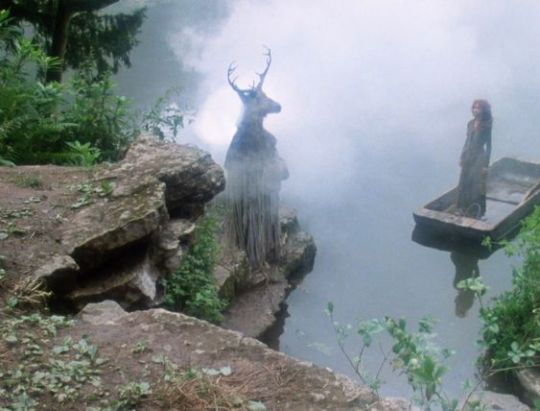
Robin of Sherwood - The Enchantment. Herne and Marian.
533 notes
·
View notes
Text
Today, Wikipedia told me...
That the legend of Herne the Hunter might have been made up out of the whole cloth by Shakespeare, for his play The Merry Wives of Windsor. He could have also been relating a local town legend, but his version is the first one we have in writing:
Margaret Page: There is an old tale goes that Herne the hunter,
Sometime a keeper here in Windsor forest,
Doth all the winter-time, at still midnight,
Walk round about an oak, with great ragg'd horns;
And there he blasts the tree and takes the cattle
And makes milch-kine yield blood and shakes a chain
In a most hideous and dreadful manner:
You have heard of such a spirit, and well you know
The superstitious idle-headed eld
Received and did deliver to our age
This tale of Herne the hunter for a truth.
(Act 4, scene 4)
Anyway, I'm going to take this opportunity to thoroughly recommend Merry Wives. It's another case where the general consensus of "Literary Shakespeare Scholars" and I part company; generally, it's considered one of his "lesser plays," and not very good.
It has a feel very much like an episode of "I love Lucy." I can't help but wonder if it's held in low regard because:
A) There's not a lord or king in sight,
B) it''s very self-aware of its genre as a farce, and
C) the plot is thoroughly driven by a pair of middle-aged, married, women (and we even get to learn their first names!).
...Considering who, generally, have been the arbiters of taste, regarding Shakespeare, for the majority of the last 300+ years.
I usually like to recommend Shakespeare plays to people by way of professional performance. But this play is so rarely performed. The closest I could find was this version by college students in 2012 (uploaded to YouTube in April, 2020, by the Texas Shakespeare Festival, since live, in-person, performances weren't happening that year). ~2 1/2 hours. Auto-generated captions. Content Warning for fatphobia in the original script.
Link to an HTML of the full script online, from MIT.edu.
14 notes
·
View notes
Text

Image credit: “The Yule or Holly King”, by Michael Kerbow.
Midwinter is here, and with it comes my yearly return to the first fantasy series that captured my imagination as a child, which further kindled my appreciation of the winter solstice. Susan Cooper's book The Dark is Rising in particular addresses the curious mix of celebration and introspection that occurs around this time of year, some of it darker than we might like to admit.
Yes, hygge and family and altruism are wonderful things, but I like to remind myself that it's okay to not be feeling the "holiday spirit" as much as a need to turn toward the stories that comfort me and give me hope, as well as the stories that remind me of what can happen when hope is abandoned.
One character from The Dark is Rising that stands out for me is the horned figure of Herne the Hunter (pictured beautifully above, to my eyes anyhow). Not quite mythical ghost, not quite pagan god, he falls into uncanny valley territory that leaves me uncertain as to whether he lands fully on the side of Light or Dark. And that is the beauty and the curse of being human, not quite one or the other, but somewhere in between.
To borrow from the blog that led me to this artwork, here are three ways to honor the winter solstice (blog post linked below):
1. It causes you to be inward and reflective rather than energetic and action-oriented.
2. It reminds you to draw upon the help of plants.
3. It gives extra depth to your dreams.
May all of us find time and space for needed reflection, to heal and sustain ourselves with Mother Earth's bounty, and to enjoy the wild and wondrous landscape of our dreams.
P.S. For anyone who knows and loves The Dark is Rising, I wrote a fic about some of the characters last winter. Please heed the tags, as there are some NSFW scenes. :)
5 notes
·
View notes
Text

Phantoms of the Forest featuring Herne the Hunter from Spellbound No. 61, 19 November 1977. DC Thomson.
10 notes
·
View notes
Text
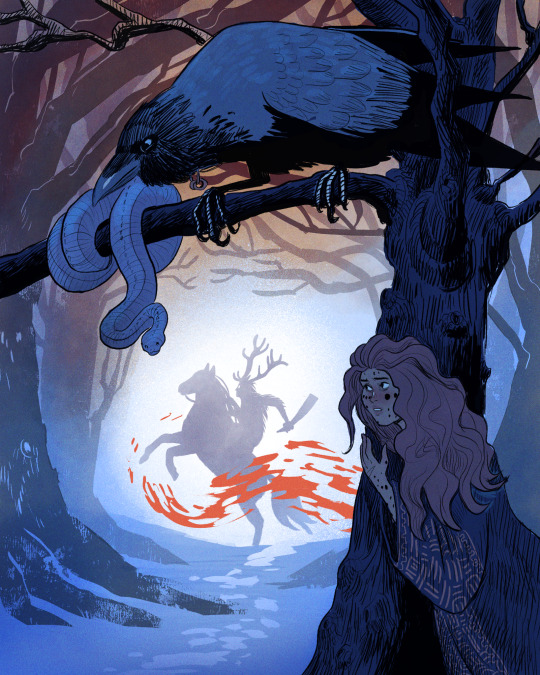
Winter wonderland, featuring herne the hunter
#winter#winter landscape#herne the hunter#the dark is rising#ill fame#illustration#comics#inspired a lot by Rovina Cai and Arthur Rackham for this piece
46 notes
·
View notes
Text
29th January
Herne the Hunter

Source: Herne the Hunter on Craiyon
On this day in 1906, the ancient tree, Herne’s Oak was replanted in Windsor Park, Berkshire. According to legend, Herne was a skilled hunter who saved the life of King Henry VIII by placing himself between the monarch and a charging stag. Herne was made Henry’s chief huntsman as a reward, but jealous gossip ultimately led to the hero’s dismissal from the king’s service. A distraught Herne then killed himself. But his story did not end there. In death, Herne transformed in a giant stag-masked hunting god, and has haunted the woods of Windsor Park ever since, leading phantom hounds in a never-ending pursuit of spectral stags. Herne was believed to be real enough, appearing in Shakespeare’s Merry Wives of Windsor to terrify a drink-addled Falstaff. The unwary are advised to flee at the sight of Herne, whose bow has been known to seek human victims as well as the creatures of the forest.
Herne is almost certainly a Tudor memory of the Celtic god of the Underworld, the winter deity, stag-headed Cernunnos. The god’s manifestation, like that of Herne, is best avoided by mortals.
4 notes
·
View notes
Photo

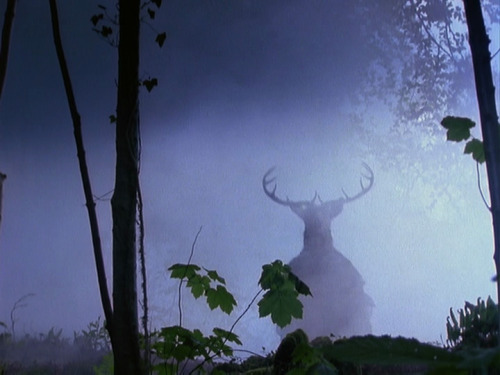
How 1980s British television made me a pagan.
#That and cruelty experienced at a Catholic elementary school#also I'm just naturally drawn to folk magic#the wind in the willows#1984#Herne the Hunter#robin of sherwood#personal#right in the childhood#the god pan
63 notes
·
View notes
Text
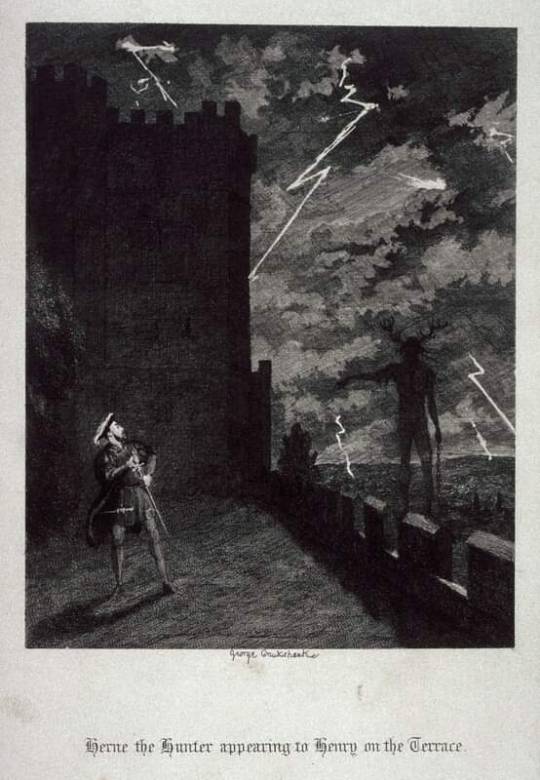
George Cruikshank, Herne the Hunter appearing to Henry on the terrace; 1843
#george cruikshank#herne the hunter#art#artwork#dark art#dark artwork#esoteric#esoteric art#esoteric artwork
12 notes
·
View notes
Text
Bounding through the brush,
The stag’s head held high,
An arrow flies,
strikes it’s mark.
Antlered head,
cloaked in furs,
Herne the Hunter draws near,
to feast on the fauna of the forest.
O’ Herne,
I call to you,
and ask for your wise guidance.
Guide my arrow true,
to pierce the game of my struggles.
10 notes
·
View notes
Text
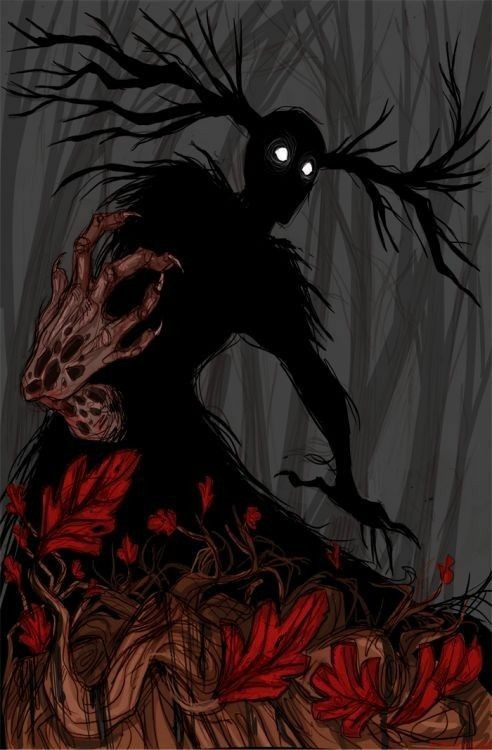
Cernunnos print Art
#cernunnos#kernunnos#horned god#the horned one#the horned king#herne the hunter#druidry#druidic#paganism#celtic mythology#celtic paganism#druid
121 notes
·
View notes
Photo

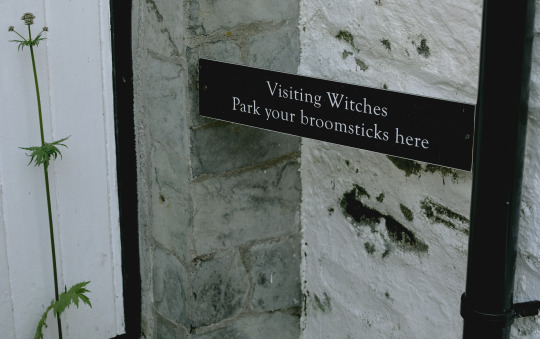


Museum of Witchcraft and Magic- Boscastle, Cornwall
#museum of witchcraft#museum#witchcrat#witch#occult#magick#magic#pagan#wiccan#wicca#broomstick#druid#cornwall#boscastle#england#toad#frog#herne the hunter#building#photography#spells#charms#witches#wood carving#folklore#folk horror
144 notes
·
View notes
Text

#sketches#mythology#norse mythology#odin#herne the hunter#frau perchta#Olympus#greek mythology#mount olympus#dionysus#deities#gods#tales of the Otherfolk#asgard#bifröst
59 notes
·
View notes
Photo

Hail to the Horned One!
The Stag of the Green Wood Grove!
The Goat of the Dark Forest!
God of the Fertile Earth!
I Hail To You!
Cernunnos, Pan, Herne!
Hail to you, Ol’ Hornie!
Hail to you, god of a thousand names!
8 notes
·
View notes
Photo

Halloween Dativo as Herne the Hunter, King of the Wyld Hunt!
15 notes
·
View notes
Text
Lore | Horned God
[This one is a little longer]
Horned God may in fact be the horned GODDESS [hypothetically]
[Deer Goddess]
The Horned gods origins are a little tricky. There are sources that claim that the Horned god was originally the horned goddess.
Cernunnos, originally derived from old pagan myths of a horned ‘Goddess’ , a story about how a deer would turn into a woman.
In folklore society in 1930, a researcher put his theories on a matriarchal Hunter gatherer society ruling highlands of scotland as a pre-celtic deer cult. J.G. Mckay.
Modern Scottish Gaelic and modern Irish Gaelic dictionaries both give the word Fiadh having two meanings: “Deer,” “God.” The deer was some sort of god, as well as divine messenger, some type to the Goddess Artemis. How you had to ask permission to hunt.
In Faerie lore, deer are their cattle and a common form of Faire women, Witches can transform into mice, hares, cats or black sheep but never the sacred deer.
In many pagan animal-cults, the priest or priestess would often wear an ornamental headdress of the sacred animal.
There are Scottish folktales of a deer woman that Mckay theories could be explained by this real practice.
In these folktales, a hunter, who has been stalking deer, observes, when putting up his gun to take aim, that the animal changed into a woman.
He falls in love with her. Adventures ensue and they are separated until he finds her again on a distant island and they finally marry and live happily ever after.
The Deer Cult and the deer-goddess cult date back from a remote matriarchal time. Diana as well as Artemis and her nymphs, would appear to be classical examples of a hint at this older heritage. No one in patripotestal times, it would seem, would dream of inventing a feminine hunting divinity.
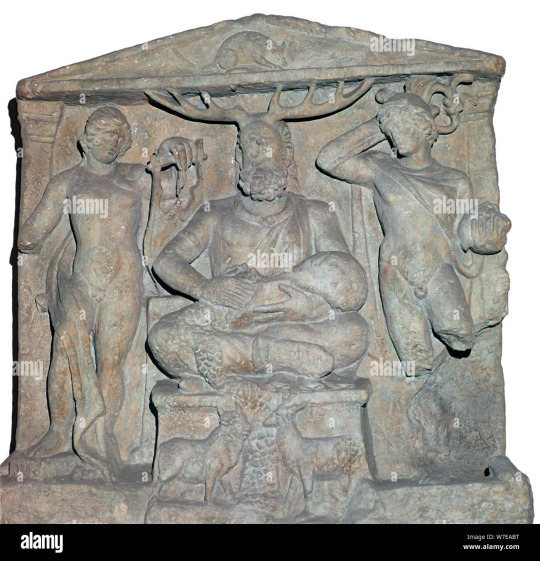
Celtic Society developed and created a masculine Horned God from the deer goddess and keep the feminine character next to him as a reminder as his shadow. By the stage the Deer Goddess matriarchy would have been in decay and her worshippers have grown fewer. While worshippers of the male Cernunnos became ever more numerous.
Today, there are whispers of this old Deer Goddess Cult in traditional German and English stag dances that are performed by men who dress themselves in women’s clothes, thereby preserving a memory of a former time when stag-dances were perfect by women, and of a later time, when the religious functions of women were usurped by men.
Shakspearen roots.
Swiftly moving on a couple thousand years, we come to the iconic bard, Shakespeare. Elizabethan english comedy abounds with images of the cuckold- a man with horns on his head, symbolising his shame that his wife has taken up with another man-
Herne the Hunter- from Shakespeare to popular culture. So at least thats where the name came from.
Robin Hood Myth [Horned God]
[Authors note: This website is not secured so take care also- these types of websites were the ones I’ve seen and how I came to know about Wicca]
The Horned God is the father of Robin Hood? And it’s Pagan?
The Horned god is a central theme/character in many european pagan faiths. Generally seen as a deity of woods, wild animals, hunting and virility he is an elemental force of nature and commonly identified as a male deity often the consort of the female force or earth mother.
This is the case in the Wicca religion where the horned god is worshipped as both the child and the consort of the great Mother, Triple Goddess.
There are some evidence that the idea of the ‘Lord’ and ‘Lady’ in Wicca is part of ancient tribal rites but such evidence is limited.
For many modern Wiccans the ‘Horned God’ sometimes known as the Great God or Great Father is his own father.
Mating with the Goddess at Beltaine then dying at Summer Solstice only to be reborn as her child at the new year, or Winter Solstice, he is a key symbol in the birth/death/Rebirth cycle.
The Horned God is known as the ‘Hunter’ has strong links in Britain with the idea of ‘Wild Hunt’ he is the taker of life, a vengeful spirit, hunting evil with a pack of demonic hounds.
He is often portrayed as carrying a bow.
The british Herne the HUnter is rumoured to survive still as a powerful spirit.
Herne is linked to Robin Hood just as Robin provided for the needy, Herne provided food for the tribe.
In some legends he is listed as Robin Hoods father, although this adds greater status to Robin Hoods legends.
He is portrayed has either having horns or Antlers, as well as his image is full of Phallic symbols.
Locations: There have been representations of Fertility icons for thousands of years as in the Altars of Stag Horns which have been found in Temples of Apollo and Diana in ancient Greece.
He is sometimes depicted with hooves or Goat hindquarters, a link to the Greek God Pan. Which of course had christians mistaken this horned fello for Satan.
Stag God image can be found in a cave painting at Trosi-Freres in France. This painting is thought to date around 13,000 BC known as the “Sorcerer” and depicts a half human, half stag spirit. This image is often seen as a representation of a shaman dressed as a stag performing a rite to ensure good hunting.

The Horned God is not an exclusively Wiccan concept as one would expect as many Pagan faiths have similar roots, the Horned god concept can be seen in the Greek God Pan, the Celtic god of the underworld and animals cernunnos, the Roman Janys, Tammuz and Damuzi the consorts of Ishtar and Inanna, Osiris and Dionysus as well as the Green Man mythological figure in the Uk.
The link with Osiris and Cernunnos which were both gods which guarded the underworld or judged souls and Osiris was both brother and consort of Isis seen by many as the Egyptian mother goddess. Cernunnos was a fertility god of the pagan celts and Gauls and is thought by many to have been the basis for the christian concept of the horned devil being a half man half goat guardian of the underworld and certainly a rival faith for early christianity.
The link between the Horned God and the Green man in English folk lore is very strong and even today many pubs in UK villages bare the name “The Green Man” often with a very pagan image on the pub sign. The Green man also known as ‘Green Jack’ or ‘Jack in the Green’ is an English spirit of trees and plants with the power to make it rain and crops grow well. The Green man is thought to share his home in the forest with forest fairies sometimes called “Greencoates” or Greenies depending on the region of the UK. In popular imagery the Green man is shown as face peering out of foliage, his wood spirit companions and fertility imagery clearly links him to Pan and also as a sort of sanitised Hern the Hunter and Wild hunter.
For many modern Druids and Wicca the Horned god is a key part of the birth, death, rebirth cycle and mentioned in many rites and celebrations, his imagery is powerful and has a strong attraction to many as a symbol of almost suppressed power / violence and male sexuality. Some modern pagans reenact the ancient rite where the hunter who brought the most/ best meat to the table was dressed in stag horns and furs and was rewarded with the right to couple with the priestess representing the goddess sometimes in front of the whole tribe. The few pagan groups that reenact this mostly do so symbolically or with the hunter and goddess being intimate partners already with only a small part of this “Great Rite” being performed before the rest of the coven.
#horned#god#horned god#LORE#witch#witchtok#witch community#witchcraft#witchblr#wiccan#pagan#wicca#Pan#belief#wiccan religion#baby witch#baby#Herne the Hunter#herne#the#hunter
2 notes
·
View notes